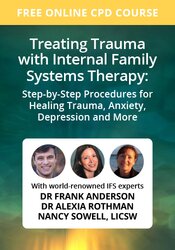Enrol in an online course today for flexible, self-paced learning—no fixed schedule required. Plus, enjoy lifetime access to course materials for convenient revisiting.
Being Present with Loneliness

The first and perhaps most acute experience of loneliness I have known came unexpectedly during a Buddhist retreat. I was 24, disorientated from living in India, and staying at the time in an entirely empty property used as a Buddhist Centre in North London. Between the teaching and meditation sessions, knowing no one, I came back to my echoing house and felt desperate. I took a photo of this space that I still have, a collapsible wooden chair in the centre of a bare room. I suspect the severity of my loneliness, at an extreme I had not known before, scared me. I did not know I could feel like that. And from then on I did everything I could not to feel it again.
Looking back on this experience, I now realise that the tools to work with this feeling of loneliness creatively were actually being offered to me during the retreat but I apparently had not recognised them. Buddhism teaches that it is our inability to be with things just as they are that leads to our suffering. Depth psychologies say much the same: depression and anxiety arise within us when we cannot bear to have the emotions we have. The Buddha described this conflict within us as being wounded by two arrows. The first and unavoidable arrow is the inevitable hurts that come from simply being human – external events and the difficulty of painful emotions. But the second arrow is the wholly avoidable hurt that we inflict upon ourselves through rejecting emotions we cannot bare to feel and thoughts we dare not think. Effectively being at war with our own being.
So what to do? The answer to this is extremely simple but very hard to accomplish. Don’t be taken in by books on Buddhism or secular mindfulness courses that seem to promise a quick fix – this is actually the work of a lifetime. The answer is that we gradually learn to turn towards our loneliness and be present with it mindfully. Nature has given us two automatic options: we spontaneously either push emotions away so as not to feel them, or become entirely overwhelmed so that we and our emotion are one and the same. However, a third option, to be mindfully present, is also available. To cultivate this option, creating a relationship with our loneliness, we simply begin by asking ourselves, “Where in my body do I feel this?” Emotions, including loneliness, are physical, often intensely so, and may be felt as sensations in different places in our body. All of us are already acquainted with the nervous tummy, sinking heart and choked up throat. Having identified where our emotion is located we gently rest our attention upon the sensation and leave it there. Giving the emotion space, being kindly disposed and accepting of whatever we find. Not trying to get rid of it or change it into something else. Not thinking about it or trying to analyse it. This is much simpler – gently rest the attention on the sensation and breath, nothing more. When we lose concentration, probably within a moment or two, we just notice this and start again and continue for a while longer. The longer we do it, the better it gets.
Of course, this is where it gets tricky. Being present with painful emotion is just about the last thing we want to do and we instantly hit our resistance. If we do not immediately veer off into distraction we will discover that, rather than just being present, we are trying to change or get rid of what we are feeling – the war with ourselves is still raging. Such a discovery is not reason to give up. It is normal and the first insight that most of us have when we start to be more mindful. However, the way to work with this is just more acceptance and kindness. It is like we say to ourselves, “It’s OK, I can be with this, I don’t have to push it away, these are just sensations coming and going. Breathe.” And so in this way we continue.
Doing this just once will have very little value – although the first attempt can be astonishing in that it may momentarily give us a radically different experience of ourselves. But to make a lasting impression, to really establish a relationship with difficult emotions, will require that each time they are felt we greet them mindfully, with kindness and acceptance. And again, and again, and again.
Finally, I recognise this may not be for everyone – nothing is. I also recognise that it is natural to feel lonely when we are alone and separated from those we love. However, there is also something fundamentally alone within the human condition that cannot be addressed through changing external circumstance and this is where this approach comes in. Being present with our aloneness we become a friend to ourselves.














.jpeg)



